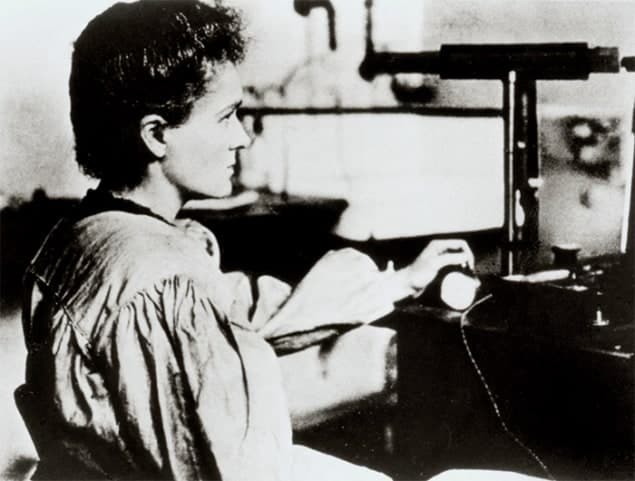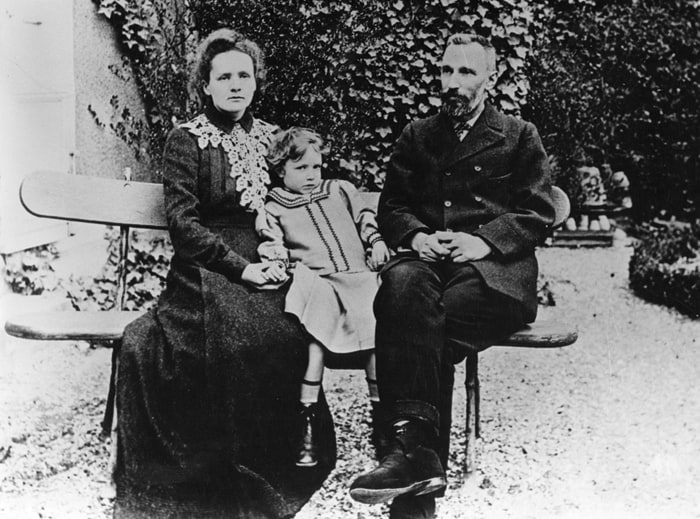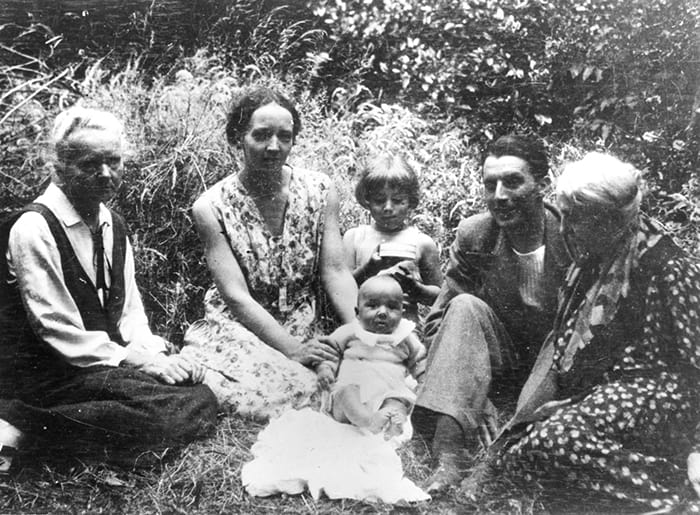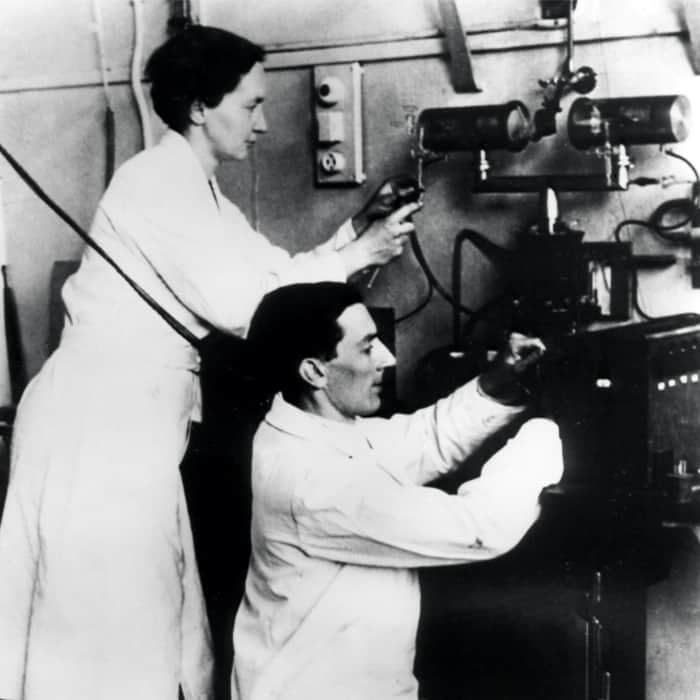Physicist Hélène Langevin-Joliot – the granddaughter of Marie Curie – talks to Tushna Commissariat about the “Curie complex”

The year was 1921. Humanity was attempting to recover from the devastation of the First World War, and looked to the dawn of the roaring twenties with tentative optimism. At the same time, Albert Einstein was awarded a Nobel prize for his discovery of the photoelectric effect, Boeing tested its first plane over land and the enigmatic physicist Marie Curie, who had won her own physics Nobel 18 years before, embarked on a tour of the US to raise funds for her radium research.
Curie is one of only two women to have won the Nobel Prize for Physics, and nowadays is often seen as a role model for aspiring scientists. However, the idolized story of her success has led some people to treat female scientists as equal to male scientists only if they take a similar approach to work and life as Curie herself did. There exists, in other words, a subtle and insidious belief that not only do female scientists have to achieve as much as their male counterparts in order to be treated as equals in science, but that they also have to be academically superior – almost some kind of genius – as well as modest and family-orientated to boot.
It was during that 1921 trip to the US that the rise of Curie’s now near-mythical status began. Curie, then 53, was travelling at the behest of journalist Marie Meloney, who had interviewed her the year before as editor of the American women’s magazine The Delineator. During that dialogue, Meloney had been surprised to learn that Curie’s institute was in need of funding to source radium, yet research and therapy centres in the US together had about 50 times as much radium as the single gram that Curie – the discoverer of the element – had in her own laboratory. In response, Meloney had taken it upon herself to fulfil Curie’s most ardent wish of having access to a second gram of radium. She had set up the “Marie Curie Radium Fund” and publicized the trip widely.

Curie toured the US with her daughters Ève and Irène, who at the time were in their late teens and early twenties, respectively. Curie’s visit was a big sensation. The girls even stood in for their mother during some of the many public events, as so many people wanted to shake Curie’s hand that it was soon in a sling. Thanks to Meloney’s efforts, together with a committee of wealthy American women and distinguished scientists, the campaign was hugely successful. The visit culminated with then US president Warren Harding presenting Curie with one gram of radium at the White House. A photograph of this meeting shows a pleased-looking Curie, arm in arm with the smiling president.
Celebrity status
Unbeknownst to Curie and her daughters at the time, their trip to the US – which was to become the first of many – would have a long-lasting impact on women in science.
Before long, the American media’s romanticized portrayal of Marie Curie led to her status as a celebrity and role model. Curie’s life made for an alluring story. Not only had she defied the social conventions of her time to achieve scientific greatness, but she did so despite an impoverished upbringing and appeared to have been unaffected by her success. A humble woman, Einstein once described her as the only person who could not be corrupted by fame. Taken together with her work on the front lines of the First World War with her mobile X-ray equipment, and her role as a caring mother, Curie was presented as someone who balanced great achievements and family life with ease.

In many ways, it is easy to see why Curie is almost the perfect role model, being a woman with an extensive list of “firsts” to her name. Not only was she the first woman to win a Nobel prize, she was also the first person and only woman to win one twice. Curie was also the first woman to become a professor at the University of Paris. Even 60 years after her death in 1934, Curie’s heritage was such that she became the first woman to be entombed on her own merits in the Panthéon in Paris in 1995 – an honour normally reserved for “national heroes”, including the likes of Voltaire and Victor Hugo.
So profound was the impact of this image of perfection that it has since led to the “Curie complex”, which was first observed in the 1980s by science historian Margaret Rossiter and was later tackled in Julie Des Jardins’ 2011 book The Madame Curie Complex (see August 2011 pp36–37). Despite the fact that Curie’s work and life empowered and encouraged women, Rossiter observed that Curie’s towering successes were so unattainable and her image so perfect that it has led to both women and men feeling they can dismiss women who do not meet the unrealistically high standards that Curie inadvertently seemed to have set.

Today, despite there being more women in science than ever before, many people still identify Curie as the most famous female physicist more than 80 years after her death. In the intervening years, a long and distinguished list of other women have made great strides in physics, but – lacking the buzz and idolization that surrounded Curie – they find their contributions too often ignored or minimized in importance. Curie’s legendary status, meanwhile, lives on.
Demystifying Mae
In an interview with Physics World, Curie’s granddaughter, Hélène Langevin-Joliot, reveals a much more down-to-Earth picture of Marie, or “Mae”‘ as she was known by her family. Daughter of Irène and Frédéric Joliot-Curie, 87-year-old Hélène was a professor at the Institute of Nuclear Physics at the University of Paris and is an emeritus director of research at the French national research council (CNRS). Speaking after addressing a meeting in March on “The lives and times of pioneering women in physics” organized by the Institute of Physics (which publishes Physics World), Langevin-Joliot laughs as she recalls visiting Curie most weeks and wandering “straight into the kitchen for a snack before going to see my grandmother, like in any ordinary family”. She fondly recalls going on walks with Curie as well as summer holidays in the mountains or by the seaside – memories that suggest the Joliot-Curie household was, in most ways, a typical happy family home.
Langevin-Joliot seems to have been largely unaffected by the fame of her parents and grandparents. Indeed, she only vaguely remembers the day in 1935 when a telegram arrived, which was followed by some discussion in the house between her parents. They had just learned they had won the Nobel Prize for Chemistry for their discovery of artificial radioactivity. She explains that at around that time, the family had recently moved from a flat in the centre of the French capital to a “large house with a garden in the outskirts of Paris”. For Langevin-Joliot, who was then eight, there was a lot of change afoot and she was more excited about the prospect of friends visiting her new home to play tennis at the weekends than she was about her parents’ news.

In fact, the more she reveals about her childhood, the less it seems like Langevin-Joliot faced any of the pressures one might think would accompany growing up in a family like hers. Langevin-Joliot admits that her grandmother’s status is almost mythical today, but adds that “my brother [Pierre] and I were not brought up in this myth, and this helped us”. She herself feels that she did not suffer from the Curie complex. As a child, she did very well at school and particularly enjoyed studying maths, physics, gymnastics and literature. “My parents never pushed the idea that I should choose science,” she says, but adds that they would give her and her brother small experiments to do as children. “I remember building a small powered car…doing some chemistry at home…I was very happy to grow a crystal from scratch,” she says. Langevin-Joliot maintains that the final decision to take up physics and chemistry after school was hers alone.
As well as not being affected by the Curie complex, Langevin-Joliot also feels that she personally has not been the subject of gender bias in her career, although whether her impressive lineage protected her from it is not clear. “When I was a young researcher, it didn’t bother me at all as there were a significant number of young women in my lab,” she says. It was only as she began attending conferences, especially outside of France, that Langevin-Joliot noticed for the first time the distinct lack of women in physics. She adds that in the 1960s and 1970s, while there were some female researchers in France, Spain and Italy, the only female British career scientist she recalls meeting is Daphne Jackson, the UK’s first female professor of physics.

A generation earlier, there had not been such equality among French scientists. Langevin-Joliot remembers her mother, Irène, describing how she had been rejected three times by the French Academy of Sciences – which also famously never elected Curie into its ranks. “She said, ‘Okay, I will ask for a seat at the Academy at every occasion and we will see how long it will take,’ ” recalls Langevin-Joliot. Sadly, her mother died in 1956 before that could happen. It was to be another six years before the first woman was elected to the academy – Marguerite Perey, who was one of Curie’s doctoral students.
Campaigning for equality
Well over a century after winning the Nobel Prize for Physics, Marie Curie is still one of only two women to have won the award – the other being Maria Goeppert Mayer – and she is one of only four female Nobel laureates in chemistry. Despite Langevin-Joliot feeling she did not experience gender bias in science herself, she acknowledges that it is a big problem for others and, these days, spends her time actively promoting careers for women in science. She also talks about her family at schools and other institutes, having herself rediscovered the legacy of her grandmother in the past few decades. This happened, in part, after her aunt Ève revealed that she had preserved some of Curie and husband Pierre’s original papers, letters and apparatus, which were ultimately given to the Radium Institute and National Library in France.
Langevin-Joliot strongly feels that attitudes towards female scientists relate directly to the state of society at any given time, and that the answer to truly achieving equality between men and women, at least in the workplace, involves many factors – the Curie complex being just one. “I am convinced that progress over a long time will not occur without solidarity between different parts of society,” she says. “People now speak about diversity a lot, which is good.”

Another belief Langevin-Joliot has is that not getting to the top of your field does not mean failure. While physicists should aspire to do their best, she feels it is essential to work hard without the promise of necessarily being at the very top of your field, or being the one to make a great discovery. It’s not fruitful, she thinks, for physicists to constantly compare themselves to top researchers, and the tendency to only promote research that qualifies as a “breakthrough” can be detrimental. “Sometimes, you are able to distinguish some people who are really exceptional [but they are] a very very small number,” she says. “After that, there are many people who do well, and are able to improve, if they find something that motivates them.”
For anyone thinking of starting out on a research career, Langevin-Joliot encourages today’s new researchers to pick a topic that they are truly interested in, rather than choosing an area that happens to be in vogue. “You have to look carefully [at] what happens in the lab in your chosen field and what those researchers feel about their work,” she says. She urges students to visit a few labs they are interested in joining to get a better idea of the realities of the work they will do and the people they might have to work with.
Returning to her grandmother, Langevin-Joliot feels Curie’s life “showed science as a human adventure”. Curie herself believed that a combination of self-confidence and diplomacy throughout her career helped her to achieve her goals. “There is a comment of hers that I like very much,” says Langevin-Joliot: ” ‘I have given a great deal of time to science because I wanted to – because I loved research.’ “



